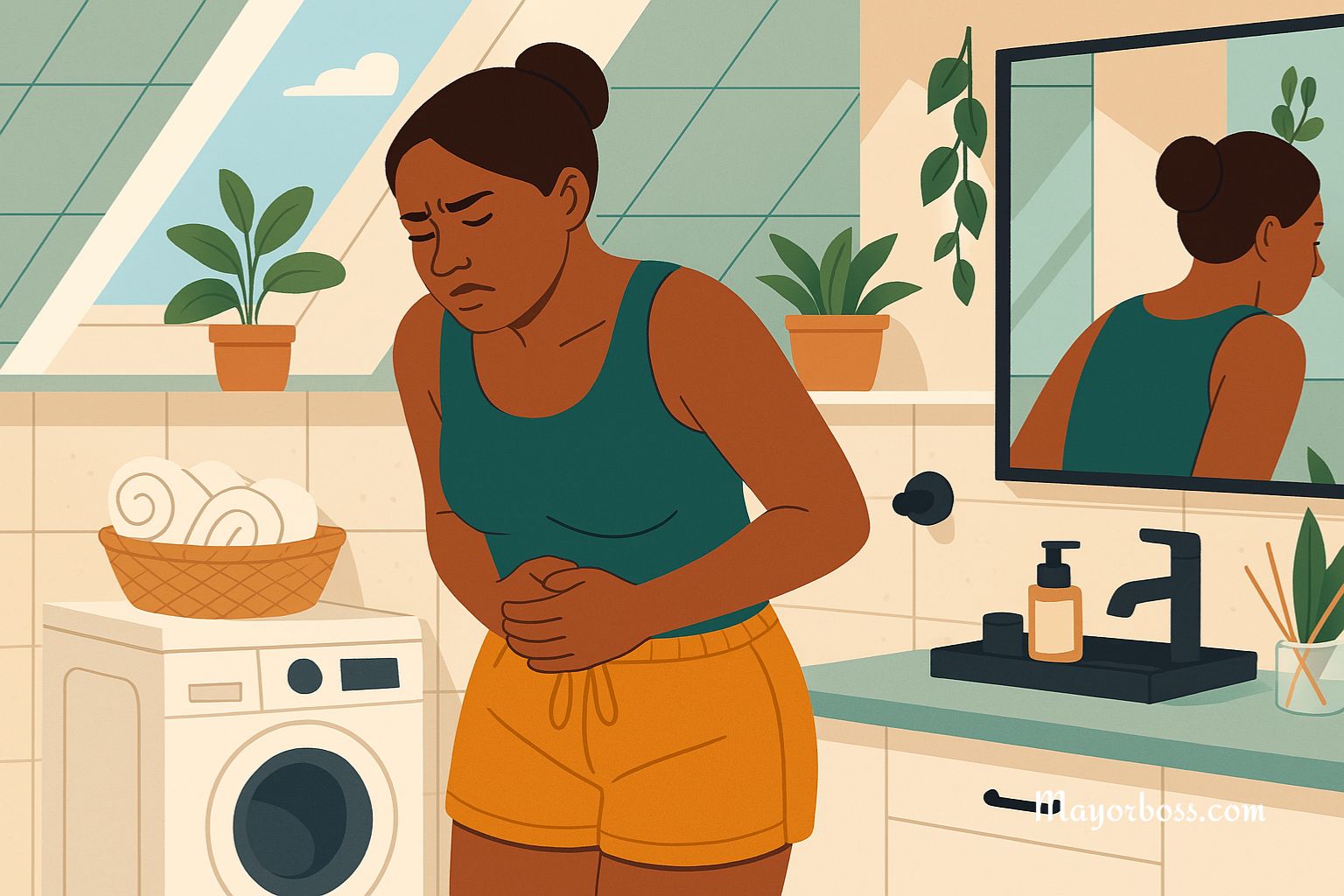Blood Clot in the Stomach: Warning Signs You Shouldn’t Ignore
A blood clot in the stomach, also known as a mesenteric vein thrombosis or mesenteric ischemia, is a serious medical condition. It typically happens when a blood clot blocks one of the major veins that supply blood to your intestines. When this blood flow is cut off, your intestines can become damaged or even die if not treated quickly.
This condition is not very common, but when it occurs, it can lead to life-threatening complications. Recognizing the symptoms early is essential. Read on to find out the typical symptoms and signs of an abdominal blood clot everyone should know about.

What Causes a Blood Clot in the Stomach?
Several health conditions and risk factors can lead to a blood clot in the stomach. These include:
- Blood clotting disorders
- Dehydration
- Cancer
- Heart failure
- Inflammatory bowel disease
- Recent abdominal surgery
- Infections
- Prolonged immobility
Sometimes, it can also happen without a clear cause. In other cases, blood clots may come from another part of the body and travel to the veins in the abdomen.
What Are The Symptoms Of Abdominal Blood Clots?
The symptoms of a blood clot in the stomach can develop gradually or come on suddenly. They can feel like other digestive problems, so many people delay seeking help. That can be dangerous.
Here are the warning signs you should not ignore:
1. Sudden, Severe Abdominal Pain
The most common symptom is intense pain in the middle or lower abdomen. It may come on quickly and feel much worse than usual stomach pain. The pain often doesn’t go away with rest or over-the-counter medicine. It may feel like cramping or squeezing.
2. Pain After Eating
You might notice the pain gets worse about 15 to 60 minutes after eating. That’s because digestion increases blood flow to the intestines, and if a clot is present, the tissues struggle to get enough oxygen. Over time, people may avoid food to escape the pain.
3. Nausea and Vomiting
As the intestines become irritated or start to lose blood supply, nausea may occur. Vomiting may follow, especially if the condition progresses. In some cases, vomit may look green or have traces of blood.
4. Bloating or a Feeling of Fullness
You may feel unusually full or notice your belly looks swollen. This can happen when the intestines are inflamed or blocked. It may be accompanied by tenderness when you press on your stomach.
5. Diarrhea or Bloody Stools
A blocked blood supply can lead to irritation or damage inside the bowel. This might result in diarrhea, sometimes mixed with blood. If the bleeding is severe, your stool may look dark, tarry, or bright red.
6. Fever and Chills
As tissues in the intestines become damaged, your body may respond with signs of infection. A fever, sometimes with chills, is a red flag. It suggests that inflammation or tissue death may be occurring.
7. Low Blood Pressure or Dizziness
If the clot causes severe bleeding or damage, it can lower your blood pressure. You may feel dizzy, weak, or faint. This is a sign that urgent medical attention is needed.
When to Seek Immediate Help
If you suddenly experience intense abdominal pain that doesn’t go away, especially if it’s paired with vomiting, fever, or blood in your stool, go to the emergency room. These symptoms are not normal and should never be ignored.
Prompt diagnosis and treatment can prevent serious damage. Left untreated, a clot in the stomach can lead to bowel death, sepsis, and even death.
How Is It Diagnosed?
Doctors will often start with a physical exam. Blood tests may show signs of infection or inflammation. Imaging tests like a CT scan with contrast of your abdomen and pelvic region or ultrasound are usually needed to find the clot and assess the health of your intestinal tract and organs.
How Are Blood Clots In The Stomach Treated?
Treatment depends on the size and location of the clot, how much damage has occurred, and your overall health. Options may include:
- Blood thinners (anticoagulants): These help prevent the clot from getting larger and reduce the chance of new clots forming.
- Thrombolytics: These are powerful medicines used to break up clots. They are sometimes given directly into the affected vein.
- Surgery: If part of the intestine has died or is severely damaged, it may need to be removed. Surgery may also be used to remove the clot.
Can You Prevent a Stomach Blood Clot?
Some risk factors can’t be changed, but others can be managed. Here are some ways to lower your risk:
- Stay well hydrated.
- Keep moving, especially during long trips.
- Take medications as prescribed if you have clotting disorders.
- Manage chronic conditions like heart disease or diabetes.
- Avoid smoking.
If you’ve had a blood clot before, your doctor may recommend long-term blood thinners or regular checkups to monitor your condition.
Final Thoughts
A blood clot in the stomach is a medical emergency. Its symptoms may seem like common digestive issues, but the consequences can be severe. Trust your body. If the pain is intense, new, or worsening, don’t wait. Get checked right away.
